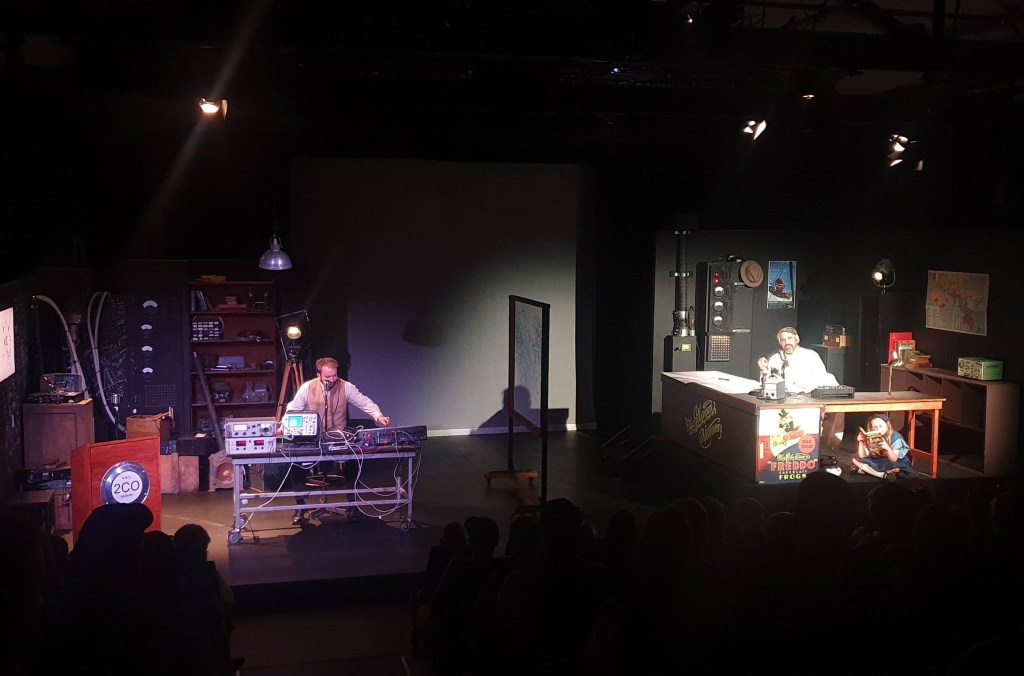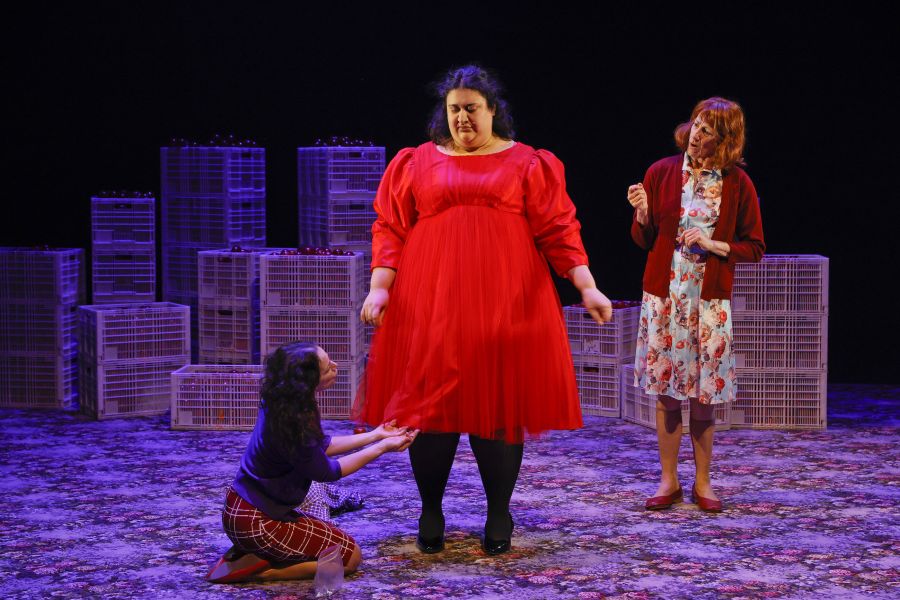Two and half years since theatres were plunged into COVID darkness, audiences are relishing the chance to attend live performance again.
Though, as many theatre companies emerge from the shadows, they are stepping back into an altered world where some intriguing shifts are underway.
As Queensland Theatre Artistic Director Lee Lewis puts it: ‘Before 2020, people were sometimes looking to] the theatre for the unknown. Whereas now, in this past few years, the world has provided that [sense of the unknown].
‘So I think now, [in theatre] we are looking more to see the colour and vibrancy of people we know, as well as the stories we know,’ she said.
Speaking to a range of artistic directors from around the country, including Lewis, it seems these views form part of a wider picture which reveal some distinctive new audience trends.
What kinds of stories are resonating the most?
For Malthouse Theatre’s Artistic Director and co-CEO Matthew Lutton, the company’s recent sell-out season of Looking For Alibrandi is a sign their audiences are being drawn to familiar stories that offer some certainty around what they will see.
Based on Australian writer Melina Marchetta’s bestselling book published in 1992, the work was adapted for the stage by Vidya Rajan, and directed by Stephen Nicolazzo. Its Belvoir season opens in October.
‘Alibrandi is a title that’s recognisable,’ Lutton said. ‘And I think there’s an excitement in coming to be told a story you already know.
‘Part of that is about nostalgia and feeling comfortable,’ he continued. ‘But Alibrandi is also not a comfortable story. It’s got a whole layer of dissecting an ugliness in Australian society – it’s got provocative ideas, and I think that’s probably what makes it a fulfilling theatrical experience.’
Read: Theatre review: Looking for Alibrandi
For regional company HotHouse Theatre, Artistic Director Karla Conway says their most popular recent shows have seen crowds of families and friends using the theatre as a space to reconnect.
‘The project that we did in March [2022] called This Is Your City was an immersive adaptation of a board game which is played live through the city [of Wodonga], and groups of families could come in and play that together,’ Conway said.
‘So experiences where friends and families can get together again I think have catalysed the re-emergence of audiences, and it’s where these [arts] events can really support connection,’ she said.

Interestingly, none of the directors ArtsHub spoke with feel audiences are currently looking to the theatre as a place of safety to escape the plethora of real-world crises we’re facing.
As Lewis explained: ‘Yes, they are looking for a certain amount of comfort, and they like a sensation of sureness. But that doesn’t mean they are making safe choices.’
Lutton has heard recent talk of theatre as an escape, or as a way to forget these crisis times, but has a different view.
‘Escape is a part of it – people wanting to explore experiences outside of their own. But for me, that’s much more about being transported, than it is about escape,’ he said.
‘Our approach to programming at Malthouse at the moment is about eclecticism. It’s offering audiences choice, which is what they’ve been denied so much [during COVID],’ Lutton explained.
New ticket buying trends
Another indicator of the audience’s desire for greater choice is showing up in some new ticket buying habits.
At HotHouse, for example, show bookings made weeks and months in advance have noticeably dropped off.
‘Things like subscriptions, where people are planning their years in advance, are reduced,’ Conway said. ‘But we’re getting floods of late purchasing.
‘In the week of the show, all of a sudden single ticket sales start to increase quickly,’ she said.
Read: $5M gift secures Griffin’s future in Kings Cross
Similar patterns are being felt at Queensland Theatre and Malthouse, with Malthouse recording late ticket sales soon after Melbourne’s lengthy lockdowns lifted.
‘Since 2021, people who would have purchased tickets six months before a show are not doing that any more,’ Lutton said of Malthouse’s experiences, which include the company’s recent switch to a new model where their seasons are announced in a rolling fashion, rather than as part of an annual program.
‘It’s very similar to a UK model, and it removes the strangeness of booking 12 months in advance,’ he noted, adding that most commonly, ‘people are buying for a show for this weekend.’
At Queensland Theatre, similarly, Lewis has observed how ‘many people are buying [tickets] the day before.’
Are theatre audiences’ expectations shifting?
Despite the white-knuckled ride for theatre companies’ box offices, the desire for quality new Australian work is a positive sign for the sector’s future.
Yet these recent experiences are also bringing new pressures, as audiences seem less inclined to take risks and feel stronger pulls to home comforts.
Julieanne Campbell, Executive Director at Sydney’s Griffin Theatre, said that she has definitely seen more selective audience attitudes emerging in recent months.
‘Audiences are being choosier with what they want to see,’ she said. ‘It [the work] has to be really good to warrant [them] ditching the couch and coming out to see theatre instead.’
Lee Lewis expressed similar views: ‘People have gotten really good at being at home,’ she said.
‘So now, when they venture out into the night, they want to be sure that there is a really good reason for going.’
On the flipside, these new theatre-going habits suggest audiences are hungry for new works of scale and ambition, Conway observed.
Read: Theatre review: Laurinda
‘I think there’s a bit of a desire for work of scale again,’ she said.
‘We’ve got Them [by Samah Sabawi] coming in August, and that’s got a cast of six, and that’s exciting,’ she continued.
‘Mostly, and for a number of reasons, we’ve been seeing works of two or three on stage, so to see a work with six of seven cast members – that feels like an event again.’
However, Conway also noted that audiences are still yet to return in full.
‘It’s going to be a two to three year rebuilding phase of uninterrupted programming for us to get back to our pre-COVID audience numbers,’ she said.
At Queensland Theatre, this build-back phase for the sector is proving a good time to apply some strategic new thinking.
As Lewis explained, ‘I’ve been talking to everybody in the company about how we’ve really got to think about this as starting theatre again.
‘We’ve really got to talk about what we mean by new audiences, and how we can invest in finding and building them,’ she added, a thought which is no doubt on the minds of many in the sector, as everyone continues on their paths back to pre-COVID numbers.
‘You can’t rely on what used to work. But you know what I’m also loving right now, is that people are loving the theatre because it’s not Netflix,’ Lewis laughed.





